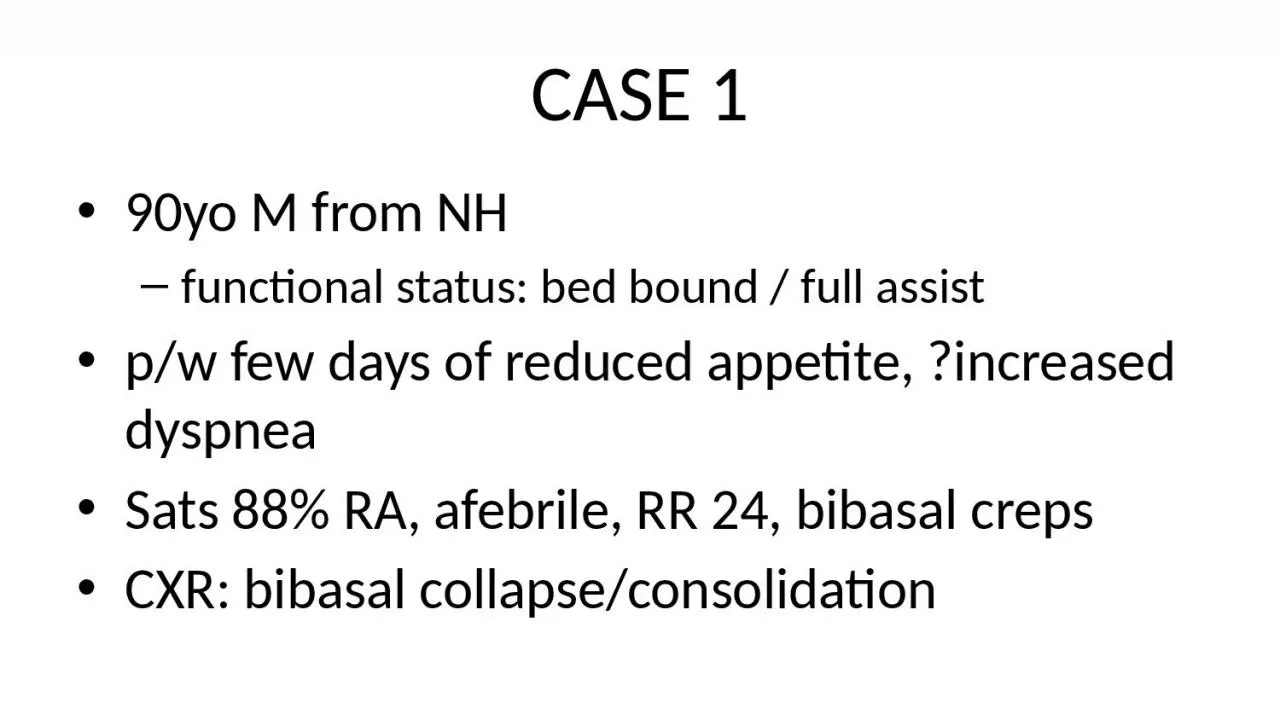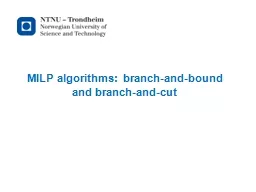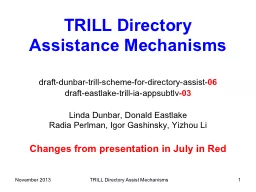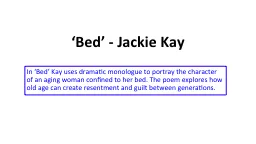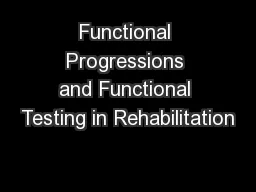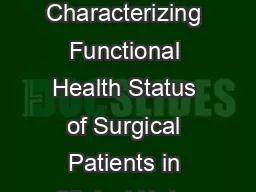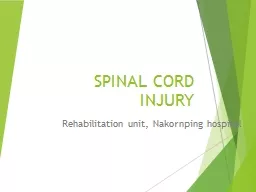PPT-CASE 1 90yo M from NH functional status: bed bound / full assist
Author : miller | Published Date : 2023-09-22
pw few days of reduced appetite increased dyspnea Sats 88 RA afebrile RR 24 bibasal creps CXR bibasal collapseconsolidation Diagnosis Antibiotic choice CASE 2
Presentation Embed Code
Download Presentation
Download Presentation The PPT/PDF document "CASE 1 90yo M from NH functional status:..." is the property of its rightful owner. Permission is granted to download and print the materials on this website for personal, non-commercial use only, and to display it on your personal computer provided you do not modify the materials and that you retain all copyright notices contained in the materials. By downloading content from our website, you accept the terms of this agreement.
CASE 1 90yo M from NH functional status: bed bound / full assist: Transcript
Download Rules Of Document
"CASE 1 90yo M from NH functional status: bed bound / full assist"The content belongs to its owner. You may download and print it for personal use, without modification, and keep all copyright notices. By downloading, you agree to these terms.
Related Documents

